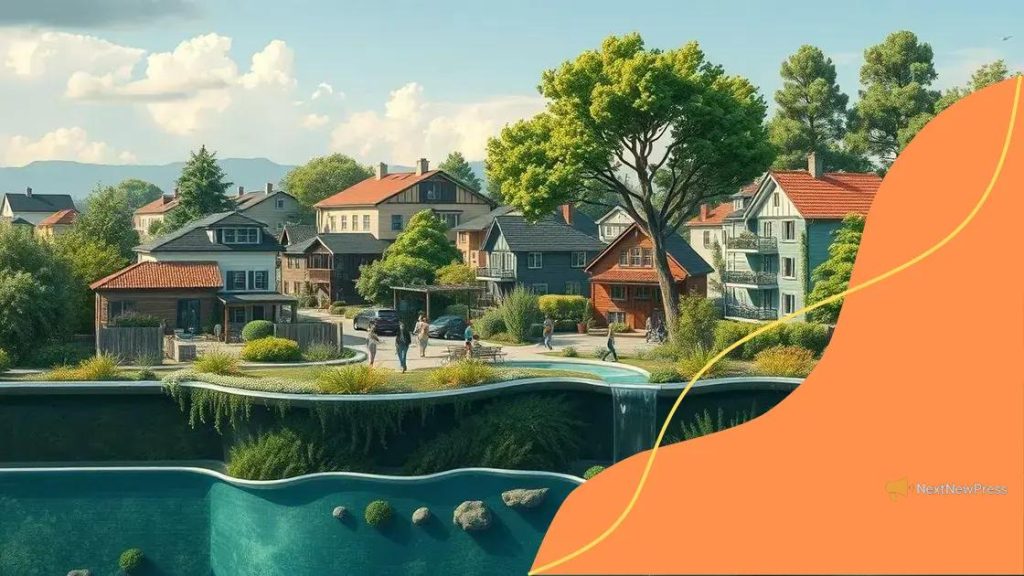Discussions on climate change adaptation and resilience strategies

Discussions on climate change adaptation and resilience strategies involve implementing proactive measures to enhance community and ecosystem resilience against the impacts of climate change.
Discussions on climate change adaptation are more important than ever as we face unprecedented environmental challenges. Have you ever considered how these strategies could shape our future?
Understanding the importance of climate change adaptation
Understanding the importance of climate change adaptation is crucial for our future. As natural disasters become more frequent, communities must act to prepare for and minimize impacts. Adaptation involves adjusting practices, processes, and structures to reduce vulnerability.
Why Adaptation Matters
Adapting to climate change is not just a preference; it’s a necessity. By recognizing this, we can develop strategies that safeguard our environments and communities.
- It protects lives and property.
- It enhances food security.
- It preserves biodiversity.
Consider the potential impacts of extreme weather. Communities that embrace adaptation strategies are better equipped to handle these events. Preparing for sea-level rise, for example, can save communities from future displacement.
Benefits of Effective Adaptation
An effective adaptation strategy brings multiple benefits. It can lead to economic savings, improved public health, and greater social equity. By choosing sustainable practices, we reinforce our resilience against the changing climate.
- Reduces economic losses.
- Improves community health.
- Encourages sustainable practices.
Moreover, successful adaptation involves not just reactive measures but also proactive planning. Engaging with local stakeholders ensures that the solutions are tailored to specific community needs. This collaborative approach strengthens the fabric of society while addressing the pressing challenges posed by climate change.
Key strategies for enhancing community resilience
Key strategies for enhancing community resilience are essential in today’s changing climate. By focusing on proactive measures, communities can strengthen their ability to cope with challenges brought by climate change.
Building Stronger Infrastructure
One of the first steps is investing in resilient infrastructure. This means designing buildings and facilities that can withstand extreme weather events. For instance, raising roads and bridges or using flood-resistant materials can make a significant difference.
- Implementing green roofs and walls to reduce heat absorption.
- Upgrading drainage systems to handle heavy rainfall.
- Establishing community centers as safe havens during disasters.
Another strategy involves enhancing natural ecosystems, which play a crucial role in reducing disaster impacts. Healthy wetlands and forests can act as buffers against floods and storms, protecting urban areas from damage.
Community Engagement and Education
Educating the public about resilience is vital. When communities understand the risks they face, they are more likely to adopt protective measures. Workshops and training sessions can empower residents to take action.
- Encouraging neighborhood watch programs for emergency preparedness.
- Promoting local gardening initiatives to enhance food security.
- Fostering collaboration among community groups to share resources.
Additionally, fostering partnerships with local governments and organizations can amplify efforts. Joining forces allows for resource sharing and the development of comprehensive plans tailored to specific community needs, ensuring that everyone works toward the same goals.
Impact of climate change on ecosystems

The impact of climate change on ecosystems is profound and far-reaching. As temperatures rise, habitats are disrupted, leading to shifts in biodiversity. Many species struggle to adapt to changing conditions, highlighting the urgent need to understand these effects.
Altered Habitats and Migration
Ecosystems are shifting in response to climate change. For instance, warmer temperatures push species to migrate toward cooler areas. This movement is evident in both terrestrial and aquatic environments. Forests may shift northward, while marine species adapt to warmer waters.
- Coral reefs are experiencing bleaching due to increased temperatures.
- Wetlands are at risk from both sea-level rise and altered rainfall patterns.
- Mountain ecosystems are seeing species shift to higher elevations in search of cooler temperatures.
In addition, altered habitats affect food availability. As some species migrate, predator-prey relationships can change, leading to imbalances within ecosystems. These changes impact local communities that rely on these resources for their livelihoods.
Biodiversity Loss
The loss of biodiversity is another serious consequence of climate change. Many species are at risk of extinction as their habitats change or disappear. The decline in biodiversity weakens ecosystems, making them less resilient to further changes.
- Endangered species may face heightened threats from invasive species.
- Pollinator populations are declining, affecting food production.
- Forests are losing tree species crucial for carbon storage.
In summary, the effects of climate change on ecosystems are complex and interconnected. Understanding these impacts allows communities to develop better conservation strategies to protect our natural world.
Pioneering examples of successful adaptation
Pioneering examples of successful adaptation showcase how communities can effectively respond to climate change challenges. These examples provide valuable lessons and strategies that others can replicate. Around the world, various regions are demonstrating innovative methods to enhance their resilience.
Case Study: The Netherlands
The Netherlands is renowned for its advanced water management systems. Facing the constant threat of flooding, the country has embraced innovative approaches to adapt. One significant measure is the creation of smart dikes that can automatically respond to rising sea levels. These structures not only protect communities but also allow for recreational areas and wildlife habitats.
- Green roofs are commonly built to absorb rainwater.
- Living shorelines are used to enhance coastal resilience.
- Floating communities are being developed to adapt to rising waters.
This adaptability shows how infrastructure can be designed to coexist with nature rather than against it.
Case Study: Bangladesh
In Bangladesh, communities are actively engaging in climate change adaptation through education and local initiatives. Farmers are adopting climate-resilient crops that can withstand flooding, ensuring food security despite changing weather patterns. Additionally, the government provides training on disaster preparedness, helping residents better cope with extreme weather events.
- Community-based early warning systems are established.
- Coastal afforestation projects have been initiated.
- Building cyclone shelters offers safety during storms.
These efforts highlight the power of community involvement in adaptation strategies.
These pioneering examples illustrate that successful adaptation requires a blend of innovative technology and community-driven initiatives. Learning from these experiences can guide other regions in developing their strategies.
Future challenges and opportunities for resilience
Future challenges and opportunities for resilience are critical as we confront the effects of climate change. While the path ahead is filled with obstacles, it also offers chances for innovation and growth. Understanding these aspects is essential for effective planning and action.
Emerging Risks
As the climate continues to change, we face new risks that threaten communities and ecosystems. Increased frequency of extreme weather events, such as hurricanes and droughts, poses significant challenges. Additionally, rising sea levels threaten coastal areas, forcing many communities to reconsider their strategies.
- The economic burden of disaster response is increasing.
- Food security is becoming a greater concern due to shifting agricultural zones.
- Water scarcity is affecting access to this vital resource in various regions.
These risks require proactive measures to safeguard lives and assets, emphasizing the need for enhanced resilience strategies.
Opportunities for Innovation
Despite these challenges, there are significant opportunities to foster resilience. Technological advancements can support the development of sustainable practices. For example, renewable energy sources like solar and wind power can reduce dependency on fossil fuels.
- Smart technology can enhance early warning systems for climate-related events.
- Urban planning can incorporate green spaces to manage heat and improve air quality.
- Community engagement in resilience planning can lead to more effective solutions.
Additionally, collaboration among governments, businesses, and non-profits can spur innovative solutions that address the unique needs of different communities. By leveraging resources and strengths, we can build a more resilient future.
The ongoing dialogue about future resilience is essential for creating adaptive strategies that meet evolving challenges. By embracing innovation and proactive planning, we can turn potential threats into opportunities for sustainable growth.
FAQ – Frequently Asked Questions about Climate Change Adaptation Strategies
What are climate change adaptation strategies?
These strategies are processes and methods that communities and ecosystems use to anticipate and respond to the effects of climate change.
How can communities enhance their resilience?
Communities can enhance resilience by investing in infrastructure, engaging in education, and implementing sustainable practices.
What are some examples of successful adaptation?
Examples include the Netherlands’ smart dikes for flood protection and Bangladesh’s community involvement in climate-resilient agriculture.
Why is collaboration important for climate resilience?
Collaboration fosters the sharing of resources and knowledge, leading to more effective and innovative solutions to climate challenges.





